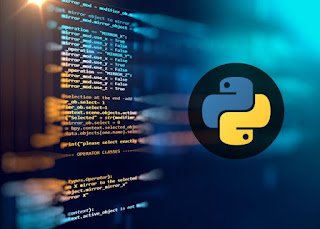Data Science and Machine Learning: Topics like pandas, NumPy, scikit-learn, and TensorFlow are frequently searched as Python is widely used in these fields.
Here's a deeper look into the key libraries and tools you mentioned:
### **1. Pandas**
- **Overview:** Pandas is a powerful data manipulation and analysis library. It provides data structures like Series (1D) and DataFrame (2D) that are ideal for handling structured data.
- **Key Features:**
- **Data Structures:** `DataFrame` and `Series` for handling tabular and time-series data.
- **Data Manipulation:** Functions for filtering, merging, grouping, and reshaping data.
- **I/O Operations:** Read and write data from/to various formats like CSV, Excel, SQL, and more.
- **Handling Missing Data:** Functions to handle and clean missing or duplicated data.
- **Use Cases:** Data cleaning, transformation, and exploratory data analysis.
### **2. NumPy**
- **Overview:** NumPy (Numerical Python) is a fundamental library for numerical computing. It provides support for large, multi-dimensional arrays and matrices, along with a collection of mathematical functions to operate on these arrays.
- **Key Features:**
- **Array Operations:** Efficient array operations with `ndarray` object.
- **Mathematical Functions:** A wide range of mathematical functions for element-wise operations.
- **Linear Algebra:** Functions for linear algebra operations, such as matrix multiplication and eigenvalues.
- **Random Sampling:** Functions for generating random numbers and performing statistical operations.
- **Use Cases:** Numerical computations, data manipulation, and serving as a foundation for other libraries like Pandas and scikit-learn.
### **3. scikit-learn**
- **Overview:** scikit-learn is a machine learning library that provides simple and efficient tools for data mining and data analysis. It is built on NumPy, SciPy, and matplotlib.
- **Key Features:**
- **Algorithms:** Implementations of various machine learning algorithms including classification (e.g., logistic regression, SVM), regression (e.g., linear regression), clustering (e.g., k-means), and more.
- **Model Evaluation:** Tools for model evaluation and selection, such as cross-validation and metrics.
- **Preprocessing:** Functions for data preprocessing like normalization, scaling, and feature extraction.
- **Pipelines:** Tools to streamline the workflow of data processing and model training.
- **Use Cases:** Building and evaluating machine learning models, feature engineering, and data preprocessing.
### **4. TensorFlow**
- **Overview:** TensorFlow is an open-source machine learning library developed by Google. It is used for building and training deep learning models and supports a wide range of machine learning tasks.
- **Key Features:**
- **Deep Learning:** High-level APIs (like Keras) for building and training neural networks.
- **Computational Graphs:** A flexible system for defining and executing computational graphs.
- **Scalability:** Support for distributed computing and deployment on various platforms, including mobile and web.
- **Ecosystem:** Integration with other tools and libraries like TensorBoard for visualization and TensorFlow Extended (TFX) for production ML pipelines.
- **Use Cases:** Building complex neural networks, including deep learning applications like image recognition, natural language processing, and reinforcement learning.
### **Additional Notes**
- **Integration:** These libraries often work together in data science workflows. For instance, data is often prepared and analyzed using Pandas and NumPy, and machine learning models are built and evaluated with scikit-learn or TensorFlow.
- **Community and Resources:** Each of these libraries has extensive documentation, community support, and educational resources available, making them accessible for both beginners and advanced practitioners.
Overall, these libraries are integral to Python's dominance in data science and machine learning, providing powerful tools to handle a wide range of tasks from basic data manipulation to complex model training.




Comments
Post a Comment